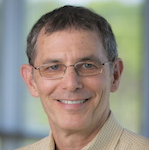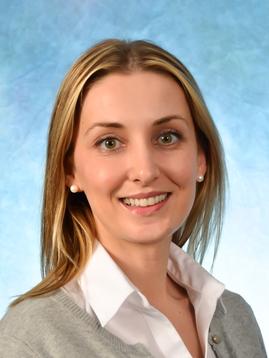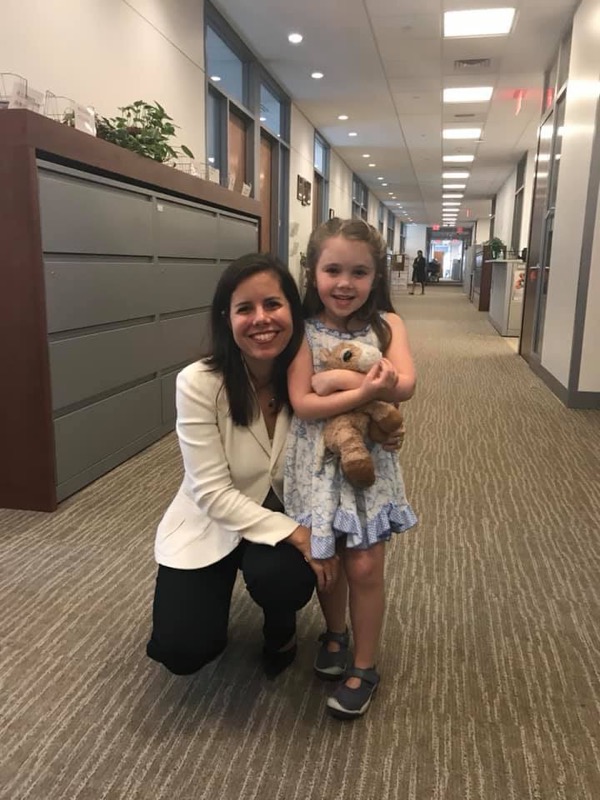
Albee Messing (Waisman Center) University of Wisconsin-Madison Private donations have been essential to our work in two ways. They have allowed us to engage in a sustained, persistent effort. And these funds allow us to act quickly, when opportunities arise, to test new approaches to treatment. One of these now finally…
Private donations have been essential to our work in two ways. They have allowed us to engage in a sustained, persistent effort. And these funds allow us to act quickly, when opportunities arise, to test new approaches to treatment. One of these now finally looks promising enough for a clinical trial, which I expect is just a few years away.
Most of our research funding over the years has come from federally funded grants, through the National Institutes of Health. But these are very difficult grants to get, and typically require years of preliminary work to generate enough data to convince reviewers that you can really do what you say you can do. This is where Elise’s Corner has really impacted what we do, by funding us through these waiting periods, allowing for a continuum of work and the resulting discoveries.
Our discovery of the genetic basis for Alexander disease over 20 years ago transformed the approach to diagnosis. It took what was previously a long and arduous process, sometimes taking years, and converted it into a simple blood test.
Ever since, the main focus of my lab has been to understand exactly how these mutations cause disease – how changing just a single amino acid out of the 432 in the overall sequence can have such devastating effects. At the same time, we made a parallel commitment to searching for an effective treatment.
From the beginning, patients and families have participated in our research in really critical ways. They’ve offered their stories, their blood, and, after they passed away, some have even donated their brains. We never lose sight of the fact that there are people being impacted by this every day, and our work is to one day bring forth a treatment.

Kristina Bowyer Executive Director, Patient Advocacy Ionis Pharmaceuticals We have been able to use the power of antisense technology to directly target the genetic cause of rare disorders like Alexander disease.
We have been able to use the power of antisense technology to directly target the genetic cause of rare disorders like Alexander disease.
Our preclinical studies have demonstrated a striking reversal of symptoms in AxD models that mimic human disease. We look forward to translating this work into potential treatments for AxD patients.

Natasha Snider, PhD Dept. of Cell Biology and Physiology University of North Carolina at Chapel Hill School of Medicine How have grants from Elise’s Corner affected your research or mission? I established my independent research group in 2015. As a new investigator, obtaining grants to start a new area of research can be quite challenging because one needs to first show a record of productivity. Without the support of Elise’s Corner, I would not have been able to sustain this part of my research program over the last two years. But, because of the work we have done with grant funding from Elise’s Corner, my lab is now being recognized in the field, and this brings us closer to securing long-term funding from the National Institutes of Health (NIH) and the National Science Foundation (NSF).
How have grants from Elise’s Corner affected your research or mission? I established my independent research group in 2015. As a new investigator, obtaining grants to start a new area of research can be quite challenging because one needs to first show a record of productivity. Without the support of Elise’s Corner, I would not have been able to sustain this part of my research program over the last two years. But, because of the work we have done with grant funding from Elise’s Corner, my lab is now being recognized in the field, and this brings us closer to securing long-term funding from the National Institutes of Health (NIH) and the National Science Foundation (NSF).
What have the grants allowed you to do/how have the grants been used? The research support from Elise’s Corner has helped us to understand some differences between mild and severe forms of AxD at the molecular level. This is critical, because we now have clear disease targets that we are going after. Our strategy is to use small molecule drugs against several proteins that modify the chemical composition of GFAP, causing its accumulation in the severe form of AxD. The goal with this strategy is to bypass the toxic function of GFAP by helping the cell to use its own resources to process the mutant copy of the protein in a way that it preserves normal function.
Have they funded aspects of your research or mission that might have otherwise gone unfunded? Have the funds been significant to your research or mission? Much of the work we have done on AxD involved the use cutting-edge technologies, such as induced pluripotent stem cells and CRISPR/Cas9 genome editing. Both of these technologies are still evolving, but hold very high promise for modeling disease mechanisms that are relevant to humans. Because of the novelty of this work, these types of experiments are high risk-high reward, which is not typically funded by standard grant mechanisms.
What are your thoughts on the current state of AxD research? I think it’s very exciting to be doing AxD research today. I am lucky to be standing on the shoulders of giants in the field (most notably Dr. Albee Messing and his colleagues), who paved the way to potential therapy for this devastating disease. Armed with key mechanistic insight from many years of work in this field, we can see that there are multiple potentially viable strategies we can use to address AxD. I think it is also exciting to have families be closely involved and shaping the future of research and clinical care for AxD.
Are there reasons to be hopeful for treatments or even a cure? If so, can you explain? Absolutely. There are many passionate and dedicated people working on this and there are many reasons to be hopeful. Having the ongoing natural history and outcomes study is very important, as it will help clinicians define the course of the disease. By coupling clinical information with basic biological mechanisms that we learn from patient cells and animal models of the disease, I really think it will be possible to come up with a rational treatment for AxD. Given how complex the disease is, a treatment will likely require more than a single drug or intervention, but I think this is possible to achieve within a time frame that is relevant for the patients who are currently living with the disease. Elise’s Corner and similar organizations will serve a vital role in this process by bringing families, researchers and doctors together to find a cure.

Amy Waldman, MD, MSCE | Pediatric Neurologist | Medical Director of the Leukodystrophy Center of Excellence, Children’s Hospital of Philadelphia This is a truly hopeful, exciting time for the AxD community. The Bonskys and Elise’s Corner were catalysts for advancement in the understanding of this disorder and their contributions were instrumental in launching our AxD research program at Children’s Hospital of Philadelphia (CHOP).
When Jenny first came to my office, she handed me a pink binder with Elise’s picture on it, filled with her medical records. She wanted to make sure I didn’t forget her little girl. I had no idea at the time how important that meeting would turn out to be, but it set in motion a series of events that have us closer than ever to a trial for a treatment for AxD.
When I first met the Bonsky family, our focus at CHOP was on the clinical management of AxD. But everything changed after the inaugural gala for Elise’s Corner. Dr. Albee Messing and I spoke at length that evening, and I first became aware of the success in using antisense oligonucleotide therapy in AxD animal models.
I knew that – without the supporting clinical information to go along with his research – a human drug trial simply would not be possible. I refused to see that happen. I returned home and immediately launched a retroactive study to assemble data from AxD patients.
We worked quickly. Six weeks later, I presented our clinical data to Dr. Messing and other colleagues at a pivotal meeting. One month later, we launched our prospective study at CHOP entitled “Natural History and Outcome Measures in Alexander Disease.” Initially, we had funding for eight patients.
However, because of grants from Elise’s corner, we have never had to pause enrollment in the study. We have been contacted by 165 patients from 23 countries, and more than 65 of them have traveled to CHOP for clinical and research evaluations.
I have everyone who joins our study team watch the videos from Elise’s Corner, so they can see the human face of the children and families we’re striving to help. It has been an honor for us to meet so many families and we are indebted to Elise’s Corner for the funding that launched our program.
It’s remarkable what Elise’s Corner has been able to achieve in just a few short years. It has given the AxD community from around the world a place to come together, share information, and find hope. It has brought together researchers and clinicians to bring focus to the work of finding a treatment and, eventually, a cure. It has awarded significant financial grants to make that work possible.
That pink binder Elise’s mom originally gave to me still sits on my office shelf. It is no longer a reminder of Elise, but rather a symbol of the work she inspired.

